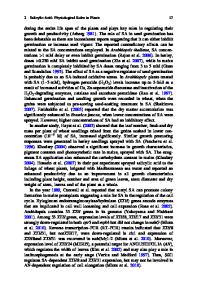Acetyl salicylic acid treatment in neonatal Bartter syndrome
- PDF / 63,226 Bytes
- 2 Pages / 595.276 x 790.866 pts Page_size
- 23 Downloads / 298 Views
LETTER TO THE EDITORS
Acetyl salicylic acid treatment in neonatal Bartter syndrome Suna Şerife Oğuz & Tülin Gökmen & Ömer Erdeve & Nurdan Uras & Ugur Dilmen
Received: 29 November 2010 / Accepted: 7 February 2011 / Published online: 10 May 2011 # IPNA 2011
Sirs, We report a case of Bartter syndrome that was diagnosed in the neonatal period and successfully treated with acetyl salicylic acid. A 30-week gestational-age premature baby weighing 1,360 g was born to consanguineous parents. The mother was gravida 5, para 2 and had developed polyhydramnios in all pregnancies. Intrauterine death occurred in the second, third, and fourth pregnancies. The baby reported here was apparently normal up to 10 days of life, when he developed nonbiliary vomiting, abdominal distension, and failure to thrive. During routine investigations, persistent hyponatremia was detected (sodium 114 mEq/L). When he was 14 days old, laboratory investigations showed hypokalemic hypochloremic metabolic alkalosis (serum potassium 2.3 mEq/L; chloride 86 mEq/L; bicarbonate 33 mEq/L; pH 7.51; partial pressure of carbon dioxide 33 mmHg), normal serum levels of creatinine, and increased urinary loss of sodium, chloride, potassium, and calcium (sodium 100 mEq/L; chloride 48 mEq/L; potassium 40 mEq/L; calcium to creatinine ratio1.81). Urine output was 4–5 ml/kg per hour. Renal ultrasonography was completely normal. Aldosteron and renin levels were high. He was diagnosed with neonatal Bartter syndrome according to clinical and laboratory findings. The child was initially put on potassium (7 mEq/kg per day) and sodium (10 mEq/kg per day) supplementation. When he was 52 days old, acetyl salicylic acid (5 mg/kg per day) in two divided doses was added to potassium and sodium supplementation. After 10 days of this therapy, the child S. Ş. Oğuz (*) : T. Gökmen : Ö. Erdeve : N. Uras : U. Dilmen Division of Neonatology, Neonatal Intensive Care Unit, Zekai Tahir Burak Maternity Teaching Hospital, 06520 Cebeci, Ankara, Turkey e-mail: [email protected]
demonstrated remarkable improvement in activity and gained weight, and sodium and potassium requirements were decreased. Laboratory values at 65 days of age were as follows: sodium 138 mEq/L; potassium 3.7 mEq/L; chloride 98 mEq/L; bicarbonate 28 mEq/L; pH 7.41, and partial pressure of carbon dioxide 42 mmHg. Sodium supplementation was discontinued and potassium supplementation lowered at 21 days of treatment, and he was discharged from the hospital. To the best of our knowledge, this is the first published case reporting such a treatment. Bartter syndrome is a rare congenital chronic renal tubular disorder characterized by hypokalemic–hypochloremic metabolic alkalosis, hyperkaluria, increased renin production, hyperaldosteronism, hyperplasia of the juxtaglomerular complex, and in some patients, hypercalciuria and nephrocalcinosis. The common clinical manifestations are failure to thrive, polyuria, and episodes of dehydration (1) Congenital or antenatal Bartter syndrome is a lifethreatening disorder manifesting with
Data Loading...











